Earthship Biotecture Transcribed: Seminar With Michael Reynolds: Part 3
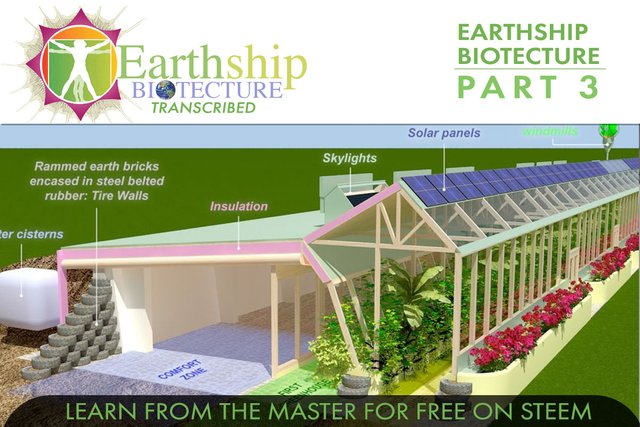
This is part 3 of a transcribed and edited Biotecture lecture by Michael Reynolds. If you want to understand why Earthship Biotecture offers the best solution to so many of our global issues then this is for you, explained so beautifully by Michael Reynolds and with my own highlighting, images, and this week some commentary!
This third part of the series is one of the MUST READ because it covers some of the most interesting concepts and ideas about Biotecture. It also explains why an Earthship is the only building model that can start off with a negative carbon footprint, and even maintain one throughout its indefinite life. We also cover the Phoenix Earthship, which was built as an experiment to see if a family of 4 could live in an Earthship 100% self sufficient for everything including food (and even fish!).
If you do read or watch this and have any questions please ask in the comments. I am happy to educate and help you to understand this. Biotecture is amazing in so many ways, and even after 20 years I still have not seen a model of sustainable building that even comes close in so many important areas such as performance, carbon footprint, longevity, ease of build, etc. Now you can also come to understand what Biotecture Really Is about!

Earthship Seminar Transcription Part 3
The Evolution of the Global Model Earthship:
COMMENTARY
Mike is explaining how they came to develop the Global Model Earthship. This is a design that can be adapted to suit virtually any climate, hot or icy-cold, and it will perform and stay within the legal temperature limits with little to no additional heating of cooling. There are many features of the global model earthship, and this model is freely available for anyone to adapt and use. There is never a single plan or design since we always build to suit our local environment, climate and resources. We all have tyres, but there are many other material choices that will depend on your location.
The schematic of a global model earthship
note: modern global model earthships have a single sloping roof without a raised section at the front.
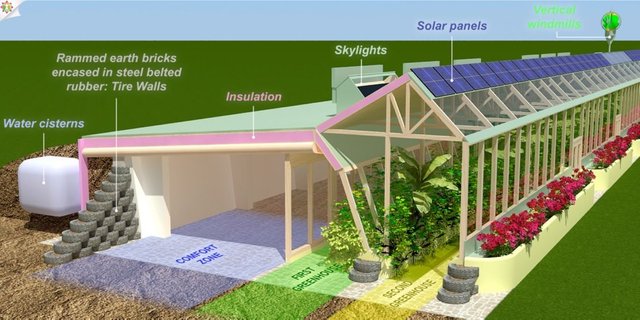
This is probably the best image i have seen that illustrated SO well how the global model looks and works. The source of this image is no longer working online so i cannot reference it.
So that manufactured housing is what is the biggest seller, that's what people buy, so we came up with the package design that worked for that, and then it just had a vertical face, and the reason we call it the package design is because it's so simple that we could just provide a kit almost that people can just put it together, and we can make components. So we were aiming at, you know, making this more user friendly. Because these buildings, these older ones had a lot of strange details that required more skills, so we were trying to take it, so you can just assemble this building.
And they worked pretty good, we did a lot of them, and then we added a double greenhouse to it, and then we got rid of the sloped roof, because we decided that we could heat the roof with solar rather than having to have it shaped to face the sun. And so, the packaged then evolved into a double greenhouse package and that evolved into what we call the global earthship. And we've got a lot of these going around the world now. We can do one of these like we just came back from Miles City, in Montana, where we put one up in 8 weeks. Totally turn key, everything working, two bedroom... and so we got the time down and we've got it to the point where this is a product now that we're ready to take out there.
"We just came back from Miles City, in Montana, where we put one up in 8 weeks. Totally turn key, everything working, two bedroom."
There are six points to these buildings half of which at least, I'm going into tomorrow, but... they are built where everybody's looking at a carbon-zero footprint these days. And so building with recycled materials is a huge thing, that's part of the rationale for using tires, but not the only rationale, for sure... and the cans and the bottles. We were doing that before we were doing anything. And... building buildings out of cans just because... the media started to scream about garbage being thrown everywhere and... 30 years ago, 40 years ago, and it hasn't stopped. So we were doing that before the word... 'recycling' was even a word.
Reusing Vs Recycling
World's biggest tyre graveyard: Incredible images of Kuwaiti ...
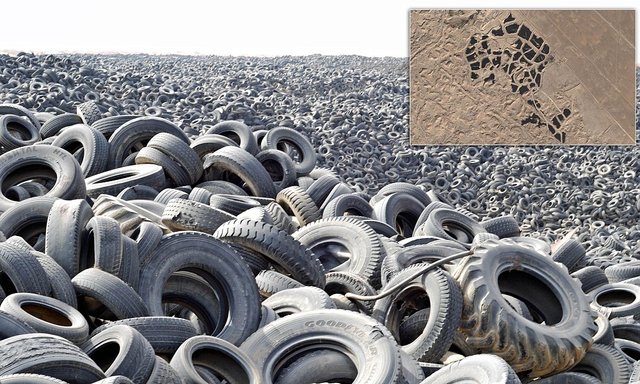
World's biggest tyre graveyard: Incredible images of Kuwaiti landfill site so huge it can be seen from space | Daily Mail Online
So in terms of a carbon-zero building, if you're using a material like tires, or bottles, or cans that... is taking a place of a manufactured material, and that manufactured material takes energy to manufacture it, you're starting off with a material that doesn't have to be manufactured. There's a double thing there. It also takes energy to do something with the cans and tires and bottles. So you are getting rid of that energy because you're using them rather than using the energy to get rid of them. When I was in Norway recently and they have a giant recycling company that it's just like... the energy that is used to recycle all these materials is... unbelievable. Really. And then they ship them somewhere.
So you've taken a place of shipping, 'cause you're using a product that's laying around, you're taking a place of manufacturing, 'cause you're using a product that's already manufactured, and you're taking a place of disposing of garbage 'cause you're using garbage.
So, there's three ways where these buildings start off with actually a negative carbon foot print. When you're going out there and pounding dirt into tires. So, it starts off with a negative carbon foot print because of building with recycled materials. Then Thermal solar, which is what I've been talking about... heating and cooling, and... That's... these are the major points of these buildings. Thermal solar heating and cooling, building of recycled materials, And so the design of the buildings is a result of what it takes to use recycled materials, and what it takes to achieve thermal solar heating and cooling. And you can see how it's evolved.
And then... Solar and wind energy, of course, which we'll go into tomorrow. Water from the sky, harvesting water. and... then a contained onsite sewage... treatment. Contained sewage treatment. And... So this is getting of you the grids, and, you know, sewage treatment isn't getting to be deal, because... you know, they kind of half way treated and sewage treatment plants, which again takes a shit lot of energy, *laughter* and... :) no pun intended there. So... It takes a lot energy to treat sewage, and sewage is a valuable thing. Sewage to me is gold. You know. It's a compost, it's... It's providing energy for food which is the sixth point. Food production.
So if we can make a building that addresses all of these issues, you know, who needs the government? *laughter*Only to hinder us from doing it. Yeah!
(Question:) Does it also re-green? Because the blackwater plants grow that we normally grow that...
Yeah, like... and you'll see, I don't know if Kirsten had the slideshow, but... If you get to see some of the older earthships, There's... I have a great picture in one of my shows that... Shows one of the buildings here, you know, you've got the barren, deserty mesa, and... It might even be in one of these posters, but... His blackwater system, which I'll go into tomorrow how they work, has just gone off.
"It's like a big oasis of green with birds and owls and... creatures Living there, and then you see the periphery, all the barren, mesa desert."
Earthship Global Model Design
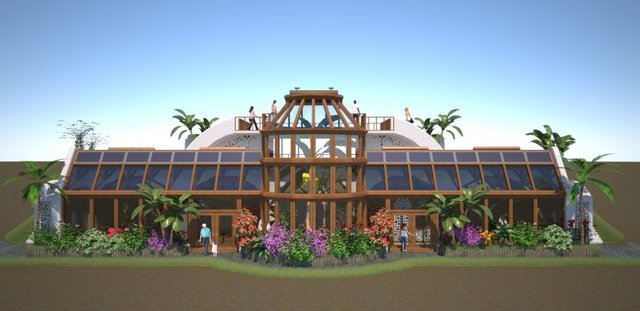
http://www.cgarchitect.com/2016/07/earthship-global-model-design
And... so yeah, these buildings actually... cause green to happen. So, and that's because they don't throw their sewage away. That's because the sewage is gold. The sewage can give you a green surrounding. So... *caugh* the... The re-greening of it is definitely an issue. Just think of this in terms of the issues in the cities and other countries. How much of garbage problem their is, You know, New York City is taking in-out embargoes and dumping it into the ocean. It's every where I go, the first thing they do is they take me to the dump. You know... *laughter* And there's mountains of tires and bottles and... piles of refrigerators and ? and things like that and... We've got ways to use all of that. I imagine Kirsten showed you how we used the washing machine, refrigerator panels. That's new in the last 4 or so years...
Harvesting Treasure From Garbage Dumps
I was in Hawaii talking to grade school kids, and they took me to the dump, of course. And... It was a little island, *(recalling the name...)* Molokai, and... They took me to the dump, and there's where first I got this idea was the... I've seen this before, but there's a big mountain of refrigerators,?, washing machines, you know, appliances that went bad. And... I was.. we had been switching... and I'll go into this tomorrow, our roof material to metal because metal catches cleaner water. And... this mountain of wash machines, you know, they all... full of these ?, yellow and green panels of metal. And nice colors and everything. So... We... after I came on from that trip, we went to our dump and there was sure enough a mountain of refrigerators.
So the crew went out there and we took solar array and a solar trailer, so we could plug in these electric snippers, and like, if this is a panel on a washing machine you just stab the corner of it, make a hole, take the electric snippers and snip them in there, and you've got a panel. So we just go to the dump and harvest metal, You'll see it on, when you go to... corner cottage has got some of it across the street... the new global house has some of it, and the Phoenix has got the best application of it. It's like... artwork there. As a matter of fact, I just got a... a new 197-something Mercedes, it was all beat up. And we... patched up the body with... washing machine parts. *laughter* It's beautiful! :) *laughter* [Comment:] 'It looks like pink swatches, you know, you can find at the paint store' - Yeah, It's great and... We found a couple of pink inks here in and... We really liked the pink, so... *laughter* We... paint some of the panels pink with metal paint, but...
But anyway we're harvesting metal now, out of the dump. For roofing. And... so every city and country has serious issues with garbage. In terms of what to do with it, and when they do something like Norway does with it, to me, it was scary. I mean they had a factory of machines sewing up energy and trucks hauling it after other parts of the world and whatever... To me that was insane. I mean, they were thought that was a great thing, but they had such a giant recycling situation, but I was just seeing energy used like crazy to recycle.
"I mean, they were thought that was a great thing, but they had such a giant recycling situation, but I was just seeing energy used like crazy to recycle."
All we're doing is gathering stuff from the dump. Bottles, cans, tires, cardboard... washing machine parts and we'll continue to find other goodies. So building with recycled materials is not just like a... It's a logical thing. There's really good materials, and in fact... I can't find, manufactured or not, better material than tires to build with or somebody gave me $30 million and said: 'Develop the best form... develop the best building material you can find' I'd probably invent a tyre. *laughter*
"Somebody gave me $30 million and said: 'Develop the best form... develop the best building material you can find' I'd probably invent a tyre"
So... It's like a... It's like a super relevant issue... That, aside from housing or anything, every city is dealing with. Then, of course, the energy consumed to heat and cool homes, everybody probably knows that the carbon... the CO2... I think... They argue, but between 30 and 50% of the CO2 impact is from buildings. And that's obviously, largely from heating and cooling buildings And so if you're heating and cooling buildings with thermal solar and trying to come up with little tricks to extend that, which we're doing then you're affecting that issue that every country and city is facing. Solar and wind for the electricity, which again is affecting, if you're replacing a coal fired power plant or nuclear power plant or whatever then you're certainly affecting... like we were in Normandy, France doing one of these... They were getting ready to do two things in the neighboring area. And they were actually putting up signs and people marching and raising hell about it.
One is they were gonna to a new landfill... for garbage, and here we are building a building out of garbage. And two is they were condemning a bunch of farms in Normandy, France, to run a big power lines down to the south of France from a nuclear power plant. And we were building a building that didn't need power. And so it caused a lot of commotion and there were 2000 people there at the building. The last day that we worked and it caused a lot of commotion, really. They also took our crew down in paddy wagons down to the police station too. I ended up having to go court there. Pretty much everywhere we get into trouble, but...
Harvesting Water
Then... Harvesting water. Water is, you know, they say, a lot of people say the next world wars will be fought over water, if you get 7 in(~18 cm) or more of water, precipitation annually, the system's work I'll go into that more fairly tomorrow... Contain sewage obviously... That's a serious issue everywhere it's either going into the... in Upper Colorado, there are so many developments all around in Colorado Springs, and Pueblo and Denver and everything... that, you know, housing built on 1/2 and 3/4 acre lots (~2023 and 3035 m²), some of them have septic tanks and some of their people have told me they walk out at back door and ground goes squish under their feet because there's just so much of it. A serious example is a development in California. It's an existing development, they're getting fund of millions of dollars a year because it's several thousand homes that are near the ocean. And so the homes all are sucking water out of the aquifer, which is creating a vacuum that's sucking in salt water, and contaminating... the aquifer of their wells with salt water, and on top of that they're putting sewage down it anyway.
"If you get 7 in(~18 cm) or more of water, precipitation annually, the system's work"
And so they're without water and sewage and getting fined until they fix it and whenever we get our systems set up there They're still going through the bureaucracy they're trying do it, and that's the big issue these day, is... getting permission for these things. And then... The next thing that is starting to be an issue, is food. We're producing... this is token here in this building, this is an old building. But the Phoenix, if you... you'll get to see it on the tour, And some of the other buildings are more... about the Phoenix is really our effort to illustrate what you can produce in terms of food, due to your treatment of sewage, due to your buffer zone, we're starting to produce food. The Phoenix has got... we're taking it to what used to be called extremes, ut now it's just to the logical next step, in my mind... The food production at the Phoenix is... 3-4 days ago we went over there... and dropped a line in the tilapia pool, caught a fish... cleaned it, skinned it, fried it... gathered some lettuce, tomatoes and peppers and other goodies from growing in the Phoenix, and had a great meal. And we got lots of tilapia there now.
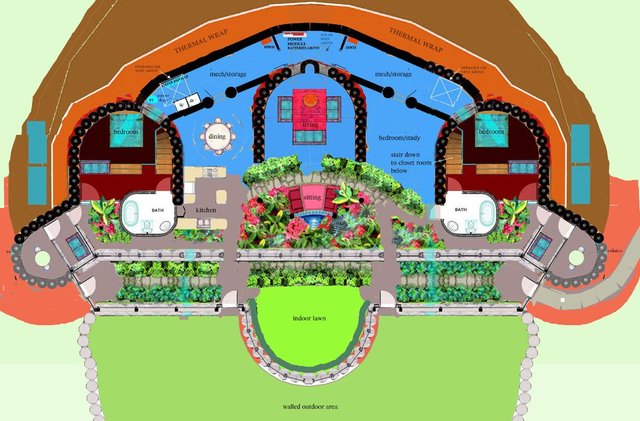
So we are now getting... to the point where... our objective with Phoenix is that... a family of four could stay alive, without anything. So when you put all of this together, we're talking about six... food and... and sewage and water and energy and garbage or... issues that every city in the world is facing. And I'm not saying we're the solution. What we're saying is we're addressing each one of these issues, Sort of in all in one blow. Called housing. You know. And... it's... It's working. We've been playing with it now for decades, and keep evolving it and so on, and... it's like a dichotomy or something because we're seeing... that this works and we're seeing that we can make it affordable, and we can teach people how to do it, And you know, you're... what you should do, coming to these seminars and being inturns and whatever... is... I'm trying to illustrate the... the core thinking of this, so that you know why these things are not really some architect's designs, were finding treasure almost here.
END OF PART 3
I hope you had a good read! If you would like to watch this then below is the video. Enjoy! Stay tuned for Part 4, coming soon!
Earthship Seminar Video 2009 - Part 3

READ PREVIOUS TRANSCRIPTS
Earthship Biotecture 101: Learn with Michael Reynolds: Part 1
https://steempeak.com/ecotrain/@eco-alex/earthship-biotecture-101-learn-with-michael-reynolds-part-1
Earthship Biotecture Transcribed: Seminar With Michael Reynolds: Part 2
https://steempeak.com/ecotrain/@eco-alex/earthship-biotecture-transcribed-seminar-with-michael-reynolds-transcribed-part-2

Did you know, I built four Earthships in India as well as being instrumental the creation of the first Earthship in the UK, Earthship Brighton. If you are also on this path and would like to read my story, I have recently published a book. It is not only a great story, but a valuable resource for you to learn from. I had no experience or training when I embarked on my mission, but managed to successfully build a gorgeous home called Earthship Karuna.
You can buy this book with Steem on the homesteaders co-op. Whilst you are there please do have a look at some of the other proudcts as there are all kinds of great things there!

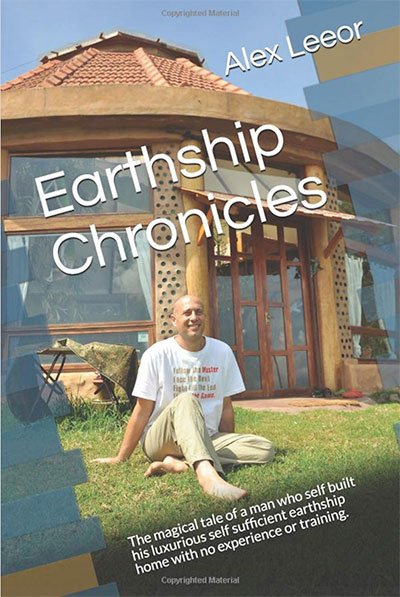
https://homesteaderscoop.com/product/earthship-chronicles-ebook/
If you don't have any steem you can also buy the ebook and paperback on amazon.
http://mybook.to/Earthship-Chronicles
or
https://www.amazon.com/Earthship-Chronicles-sufficient-luxurious-experience-ebook/dp/B07MYCBXYB
@ecoTrain
Supporting People Who Help
Make The World A Better Place
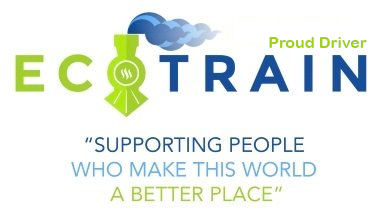
Discover previous ecoTrain magazines at @ecoTrain
** Click Here To View Our Passenger Feed**


To listen to the audio version of this article click on the play image.

Brought to you by @tts. If you find it useful please consider upvoting this reply.
Congratulations @eco-alex! You have completed the following achievement on the Steem blockchain and have been rewarded with new badge(s) :
You can view your badges on your Steem Board and compare to others on the Steem Ranking
If you no longer want to receive notifications, reply to this comment with the word
STOPDo not miss the last post from @steemitboard:
Vote for @Steemitboard as a witness to get one more award and increased upvotes!
I'm really loving that I have all these days ahead in Vietnam to read and watch and savor! Better than a binge watch on netflix! Thank you for your incredible generosity of spirit in sharing all you have learned and developed.
how inspiring @eco-alex, thanks for sharing! this is something to bookmark and share with friends.